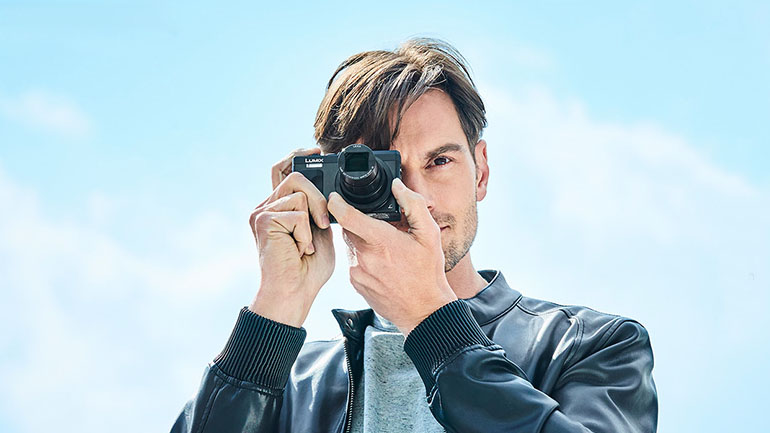Why you can trust TechRadar
Panasonic Lumix ZS70 / TZ90 review: performance
- 10fps burst shooting (5fps with AF-C)
- 1/16,000 sec maximum shutter speed (with electronic shutter)
- Time Lapse shooting
The Lumix ZS60 / TZ80 takes just over a second or so to fully come to life, which is pretty much in line with expectations for such a model when you consider its zoom. You can also turn the camera on to view images without extending the lens by pressing the play button, although the delay here is considerable (and is also the case when turning the camera on and immediately pressing the play button).
The camera appears to use the same 0.20-inch viewfinder as the ZS60 / TZ80, which presents details with 1.166k dots. In such a small camera we can only reasonably expect so much, and it’s worth remembering that many rival models do not offer a viewfinder at all. Still, it’s at nowhere near the level of those inside the company's compact system cameras.
With a magnification equivalent to 0.46x in 35mm terms it’s very small, and it can feel underpowered at times, leading to a somewhat muddy view. It also appears to be tinged with a green cast, and needs a hand around it in sunny conditions for it to be visible enough to be usable.
Adjusting the LCD screen all the way around to face the front flips the interface without any delay
It is usable, and the fact that your face is pressed against the body when you’re using it helps with stability too, but you’re more likely want to use the LCD in most conditions.
Adjusting the LCD screen all the way around to face the front flips the interface without any delay, and this also brings a comprehensive level of control over image capture. The virtual buttons for these are somewhat on the small side, but if you just want to capture selfies without any fuss you should find the system works very well, with effective face detection and a clear timer on display.
Panasonic Lumix ZS70 / TZ90 review: image quality
- Five-axis Hybrid O.I.S. system
- Raw + JPEG shooting
- Seven Photo Styles
Image quality from the Panasonic ZS70 / TZ90 is generally very good. The metering system in particular does a great job of balancing a variety of scenes, and the iDynamic setting has a noticeable effect for the better in high-contrast conditions.

Colors are largely accurate using the Standard Photo Style, and have a pleasing vibrancy when the Vivid mode is called upon, while remaining faithful to the scene.

The camera’s Auto White Balance system can generally be relied upon, although it does tend to leave images somewhat neutral at default settings, so you may want to opt for an alternative option to add a little warmth here and there.

At lower sensitivities, noise in featureless areas such as blue skies is well suppressed. Detail is generally very good in most scenes for a sensor of this type, although the wide-angle end can be a little soft, and images with more complex details show the camera’s struggle to balance noise with noise reduction. Zooming in a little and stopping down the aperture a touch help things a little.

At the telephoto extension there’s typically a little chromatic aberration visible (although no more than we would expect) and the image stabilization system does a good job to keep things stable, although it's worth taking a few shots as these can vary a little when examined close up. Texture and the detail-robbing effects of noise reduction can make themselves known at even the lowest ISO settings when zoomed in this far, but this is only really noticeable when viewing images at 100%.

The option to shoot raw images is useful in that images can be processed in-camera after they're taken, and Panasonic’s excellent in-camera raw processing function provides a high level of control over things like color, noise reduction, contrast and so on. This is a useful way to create alternate versions of your images for immediate use, although anyone expecting them to have a useful degree of latitude when it comes to processing things like noise is likely to be disappointed; there’s only so much you can do with images captured using such a small sensor.
In good light, the quality of 4K footage from the Lumix ZS70 / TZ90 is surprisingly good. Detail is clear and there’s plenty of it too, while sound is also nice and crisp. You don’t quite get the full benefit of the five-axis OIS system when recording 4K video, as you do when shooting HD video and stills, but the system still has a noticeable positive effect. On occasion it can take a little time for the lens to focus properly when zoomed right into the scene, but when it does it adjusts this smoothly.
Current page: Performance and image quality
Prev Page Build, handling and AF Next Page Verdict and competition